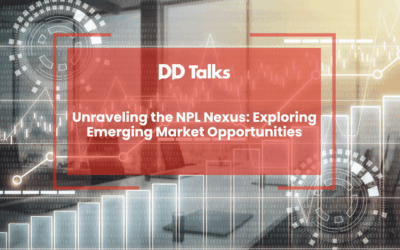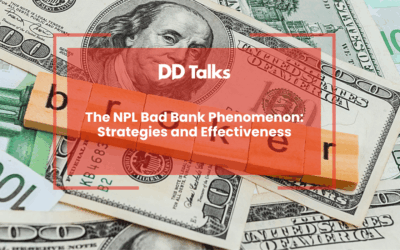Blog
Unraveling the NPL Nexus: Exploring Emerging Market Opportunities
Unlocking Opportunities in Emerging NPL Markets Emerging NPL markets offer unique and potentially lucrative opportunities for investors willing to navigate the complexities and risks. Success in this space requires a deep understanding of local economic, political,...
The Re-Performing Loan Opportunity: Unlocking Value in 2025
Essential Insights: Re-Performing Loans and Alternative Financing Re-performing loans (RPLs) represent a €320 billion market opportunity across Europe, offering higher yields (6-12%) than traditional mortgages while carrying moderate risk profiles. Successful loan...
Weathering the Storm: NPL Risk Management Amid Economic Headwinds
Effective NPL Management: Navigating Risks in Uncertain Economic Landscapes Effective management of non-performing loans (NPLs) is crucial for banks to navigate risks in uncertain economic landscapes. Key strategies include closely monitoring economic drivers,...
Reviving Non-Performing Mortgages: Strategies for Lenders and Servicers
Strategies for Reviving Non-Performing Mortgages Effectively managing and resolving non-performing mortgage loans requires a comprehensive approach that encompasses early intervention, targeted borrower outreach, and data-driven decision making. By understanding the...
Unlocking Value: Distressed Real Estate Investing with NPL Portfolios
Essential Insights for NPL Real Estate Investors NPL portfolios offer significant value through discounted acquisitions, with regional variations across Europe creating diverse investment opportunities. Successful NPL investing requires specialized valuation...
Navigating Regulatory Waves: NPL Compliance Strategies for 2025
Navigating NPL Regulatory Compliance in the European Banking Industry As the European banking industry faces rising NPL volumes and evolving regulations, navigating compliance requirements is crucial for success. Banks must adapt their NPL management practices,...
Unlocking Value: Innovative NPL Restructuring Strategies for 2025
Essential Insights for NPL Management Excellence Early intervention is critical - Proactive monitoring systems that identify deteriorating credit quality before default allow for more effective restructuring outcomes. Portfolio segmentation drives recovery - Advanced...
The NPL Investor’s Playbook: Sourcing and Evaluating Opportunities
Essential Insights for NPL Investment Success The European NPL market offers significant opportunities with €500+ billion in volume, with Italy, Greece, Spain, and Portugal leading in NPL ratios. Successful deal sourcing requires a multi-channel approach including...
Navigating NPL Risk: Stress Testing and Portfolio Management
Navigating NPL Risk Effectively: Stress Testing and Portfolio Management Strategies Effective management of non-performing loan (NPL) risk is crucial for banks and financial institutions in Europe. By implementing comprehensive stress testing frameworks, leveraging...
The NPL Bad Bank Phenomenon: Strategies and Effectiveness
Essential Insights: NPL Bad Banks in Modern Financial Systems Bad banks serve as specialized financial entities that isolate toxic assets from healthy banking operations, enabling system-wide recovery by acquiring distressed assets at discounted values. The evolution...










